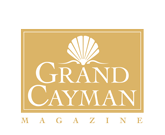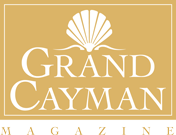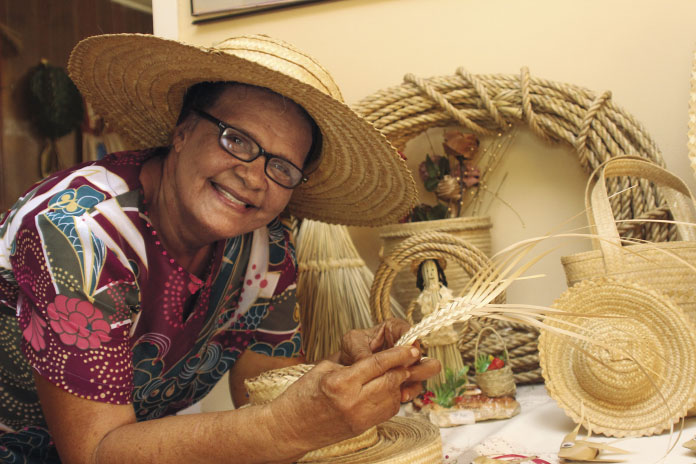From the shelter above our heads, to the shoes on our feet, the silver thatch palm’s uses literally weave their way through the pages of Cayman’s history, earning it its rightful place in our coat of arms and as the islands’ national tree.
“The silver thatch was officially declared the national tree of the Cayman Islands by Government on Earth Day, 1996,” explains Stuart Mailer, field officer with the National Trust for the Cayman Islands. “This followed the formation of an advisory committee by the National Trust, and a public opinion poll the previous year. The committee also selected a national bird (Cayman parrot) and national flower (wild banana orchid), with all choices receiving public approval by a wide margin.”
From tree to thatch
Growing to a height of 30 feet, silver thatch palms feature a thin brown trunk and broad leaves, green-topped with shimmering silver underbellies, giving the tree its name. The palm’s cream flowers are a source of nectar for honeybees, while iguanas and birds feast on its berries.
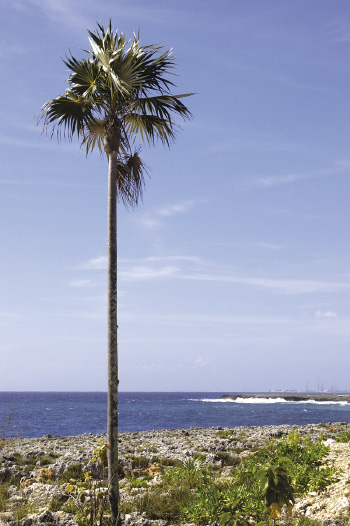 The endemic tree’s importance to Cayman’s commercial and traditional arenas is obvious. Its durability and salt tolerance lent it well to rope, used by Cayman’s fishermen and seamen and exported to Cuba and Jamaica. More than 2,000 miles of rope was exported between 1901-1906, increasing to nearly 8,000 miles between 1941-1945, before trade began to decline with the introduction of nylon rope.
The endemic tree’s importance to Cayman’s commercial and traditional arenas is obvious. Its durability and salt tolerance lent it well to rope, used by Cayman’s fishermen and seamen and exported to Cuba and Jamaica. More than 2,000 miles of rope was exported between 1901-1906, increasing to nearly 8,000 miles between 1941-1945, before trade began to decline with the introduction of nylon rope.
New leaves – tops – would be harvested at various thatch walks around the island, such as Head o’ Bay off the present West Bay Road, or Forest Glen in North Side. Women and children would pick tops in the morning on the day before the full moon, dry it in bundles, split it into strings and twist them together using cart and winch machines, forming ropes of 150 feet.
Until corrugated zinc replaced it, house roofs were once thatched with the tough, wide, rainproof whole leaves, while its use in the roofs and walls of cook-rums (kitchens separate to the main house) and outhouses continued for longer.
Other uses for silver thatch were in the construction of wompers (flat leather shoes with a thatch rope strap), baskets, dolls, brooms, hats, and mosquito brushes among other things, some of which are still produced today and can be seen on craft market tables.
Preservation of the palm
The versatile palm is currently on the endangered list, and the Royal Botanic Gardens of Kew hold a seed collection for preservation in their Millennium Seed Bank, which has 37,614 species and 2,200,964 seeds in its collection from 189 countries.
“Seeds of numerous other Cayman plants have been stored,” says Mailer. “These include yellow mastic, duppy pumpkin, dogwood, peperomia, wild banana orchids (Grand Cayman and Sister Islands subspecies) fiddlewood, scorn-the-ground, pepper cinnamon, coco plum, seagrape, bulrush, tea basil, bull thatch, devil head, balsam, galipee, and strong back.”
Developers can do their bit by conserving native trees on building sites or utilizing them in their landscape design.
As the need for thatch rope declined, so did the need for the skill of weaving. However, just as the tree itself must be preserved for future generations, so must the tales and skillsets which accompany it. Thankfully there remain in Cayman people whose fingers still flit over thatch strips, weaving them into ribbons and shapes, and keeping the art alive while they do so.
Carmen Eugenia Conolly:
Twisting a tradition of history
On a bright sunny morning Carmen Eugenia Conolly proudly stands in front of a silver thatch tree in her backyard. More than any other tree, the silver thatch has a history of commercial and traditional use in the Cayman Islands.
Carmen Conolly’s tabletop in East End is filled with items made from silver thatch – baskets, hats, brooms, fishes, rope, plaiting, and imaginative figurines woven from the venerable tree.
Working with silver thatch has been a means of survival for the 81-year-old, who has been at it since she was 9 years old, learning the craft from her mother.
Ms. Conolly said growing up making rope from silver thatch was a means of survival for “mama” and others of the East End community who would go into Further Land Farm in High Rock, East End very often to cut “tops.” Folks called the tough fibers in the emerging leaf spikes of the thatch tree “tops,” she said.
Always worried about her mother falling, Ms. Conolly often made the trip with her mother to ensure her safety.
“It was such a long walk from Gun Bay, East End to High Rock, often times we had to take off the baskets and rest along the way.” She said that’s why the journey was mostly made on the rising of the sun, to arrive inland some 3 hours later around 9 a.m.
There her mother would cut the tops – 200 or more for the day. The ladies would bind them and leave them there to dry. Tops that were cut the day before and dried were carried out in thatch baskets, so the ladies had a lighter load to carry.
For making thatch rope, it didn’t matter what moon cycle the tops were cut, but for plaiting, tops had to be cut on the young moon. “The old folks would cut them on the first Friday of the young moon. During that time, the tops are softer and whiter,” Ms. Conolly explained.
Returning to East End with dry tops, the ladies got together with other friends in the community to twist rope strands by moonlight, because it was cooler. It was also a social gathering for the ladies, drinking tea and eating fritters while they worked. Ms. Conolly said it took 30 tops to make 25 fathoms (about 150 feet) of rope.
“I wasn’t going to bed until I got my 25 fathoms. I got up early morning to lay rope, trim it and take it to Bernel Dixon or Herman Conolly shop in East End to sell for one shilling six pence so I could buy what I wanted,” said Ms. Conolly. She said Ashford Panton would come Saturdays from George Town to East End with groceries and pick up rope to store until the boats were ready to transport it to Jamaica.
The heads of the thatch top were cut off, and the hard surface stripped for twisting rope. Just the center string was used for plaiting. The hard part of the sliver thatch top was used for making brooms. Tops for plaiting were dried two weeks in the sun, stripped and plaited to make baskets. It wasn’t until teacher Harrison from Jamaica came to the island that most ladies learned how to fancy plait and make handbags, said Ms. Conolly.
No part of the silver thatch tree was thrown away, she added.
“The older folks did not tell you anything; you had to learn by watching. I learned to sew, plait and twist, but no one showed me anything. It was ‘look and learn’ for the likes of me and some others in Gun Bay,” she said.
Today, silver thatch products are in high demand, she said. “It’s worth the time because it sells. I sell a lot of stuff . . . if I were to devote my time to it, I could make good money, but I have other things like housework, church work, sewing, and cooking,” she said.
Awarded a Certificate and Badge of Honor for services to the community, Ms. Conolly is passing on her traditions to the younger generations by visiting schools to introduce students to Cayman’s silver thatch traditions.
Some of them do very well but, according to Ms. Conolly, the tradition is dying slowly.
“The young people are not just that interested in it.” As a retired school teacher, she said it’s a good hobby to learn for retirement.
Rose Mae Ebanks:
Passing on the Silver Thatch Tradition
For Rose May Ebanks, working with Cayman silver thatch is a tradition she is passionate about passing down to younger generations.
On any given day, Ms. Ebanks finds herself at any of the local government schools where she transforms classrooms into historical settings of Cayman’s cultural history and traditions, highlighting silver thatch and such things as local cuisine.
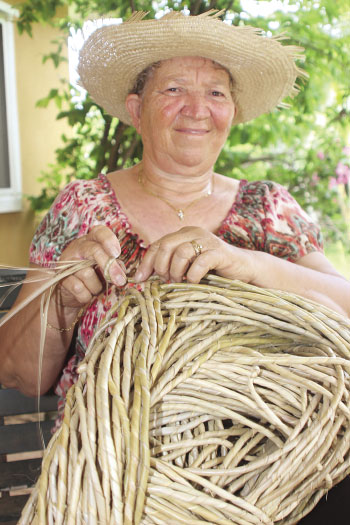 Ms. Ebanks, who is in her 60s, began working with silver thatch from the age of 9. Her mother, Leila Roslyn Ebanks, took her to the best “thatch walk” in Barkers, West Bay, and taught her how to cut, bind, twist and plait the versatile leaves. Her parents, and many others in Cayman, made their living working with silver thatch.
Ms. Ebanks, who is in her 60s, began working with silver thatch from the age of 9. Her mother, Leila Roslyn Ebanks, took her to the best “thatch walk” in Barkers, West Bay, and taught her how to cut, bind, twist and plait the versatile leaves. Her parents, and many others in Cayman, made their living working with silver thatch.
“Teaching students really touches my heart,” Ms. Ebanks said. “I find fulfillment in giving back any way that I can. Cayman silver thatch is a true passion of mine, so it’s nice to bring together two things that I enjoy doing – teaching the younger generation and working with silver thatch.”
Ms. Ebanks explains that only the newest unopened leaves (“tops”) could be used for making rope. When the children arrived home from school, they would help with the “laying” of rope. After spending many moons cutting tops inland, they were carried home in thatch baskets on donkeys and laid out to dry for about six days.
Once they were dry, the ribs of the leaves were removed with a sharp knife. The strands were then separated and twisted into strands. Three strands were twisted together to make rope on a handmade wooden machine called a “rope cart.”
According to the National Trust for the Cayman Islands, the strands were attached to one end of the cart, which consisted of three spindles that were rotated simultaneously by a single handle. At the other end was a spindle. A notched device called a “cob” was moved along just ahead of the point where the strands were becoming twisted together, to prevent knotting and to ensure a tightly laid rope. The three most common thicknesses of rope were known as “head rope” (small), “big rope” (medium) and “hauser” (large).
“One person would stand on one end of the cart, a person in the middle would walk with the cob ahead of the strands, and a third person on the other end of the cart turned the wooden mechanism to bind the three strands of thatch into rope, Ms. Ebanks said.
Cayman rope twisters like Ms. Ebanks and her family sold rope to the local shops in their district, which was then carried by shopkeepers to George Town and shipped to Jamaica by boat.
Much of the rope was made by women and children while the men were away at sea.
“It’s a good thing we really don’t have to survive off silver thatch today,” Ms. Ebanks said. She sees the thatch plant diminishing and remaining just a symbol in years to come.
“Silver thatch means a lot to me, because I know I can supply the tourists with it when they come, and they enjoy seeing us do it at the Turtle Farm.” Ms. Ebanks also finds it to be a well-paying business.
“I am proud my mother taught me and I took it in because it’s something I can live by today.” She said Cayman should have somewhere, perhaps a farm, to preserve the silver thatch.
“It’s a beautiful tree; it should be nurtured and not left to die off because our ancestors worked hard to keep the tradition alive. Today it is our national symbol,” she said.
Annelle Veta Ebanks:
Keeping Tradition Alive
Eighty-year-old Annelle Veta Ebanks is proud her Caymanian forefathers passed on the silver thatch tradition so she could hand it over to the younger generation.
Working with silver thatch for 73 years, Ms. Ebanks is one of Cayman Brac’s finest artists when it comes to silver thatch history and silver thatch products.
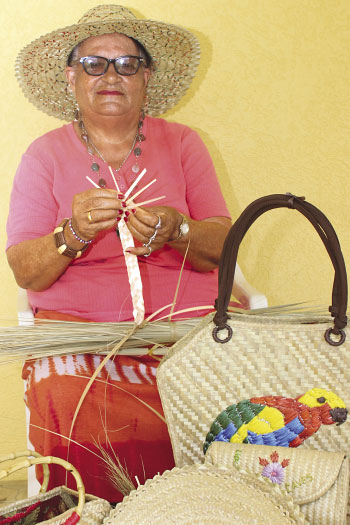 “I want to keep the tradition alive, and I love working with thatch,” said Ms. Ebanks. She finds pleasure volunteering her time and skills at local schools and cultural events around Cayman Brac and Grand Cayman.
“I want to keep the tradition alive, and I love working with thatch,” said Ms. Ebanks. She finds pleasure volunteering her time and skills at local schools and cultural events around Cayman Brac and Grand Cayman.
For Ms. Ebanks, persevering the old-fashioned way is also her life’s work. She creates beautiful thatch works such as decorated bags, hats, and purses in her home on Cayman Brac and sells them at shops such as Pure Art and Cayman Crystal Caves in Grand Cayman and Simone Scott’s gallery and gift shop on Cayman Brac, as well as to tourists who visit her home.
“The older folks figured out how to use silver thatch, and they passed it down through time. I’m still using the same processes they used to create silver thatch products today,” said Ms. Ebanks.
“That passing of knowledge was mostly done from person to person, but today the younger generation are just not that interested,” she said.
Ms. Ebanks was in her teens when she watched her father create traditional round baskets with the long straps. She would sit for hours watching him plait until one day when she just picked up a thatch stand and put her own twist to it.
Long ago the men used round baskets to collect sand from the beachfront, and ground provisions and firewood from inland.
“No one taught me how to do it, not even my dad. Just by watching him, I learned to make my own little miniature baskets. I continued working with the strands of thatch until I formed my own patterns, style, shapes and sizes,” she said.
To find tops to make baskets, Ms. Ebanks still searches the bushes on Cayman Brac, assisted at times by her husband. She also buys tops from others in the community. Her favorite place to gather silver thatch tops is close to the sea on Cayman Brac’s South Side which she said are much softer.
“The softer ones I use to make the men’s and ladies’ hats; the stiff ones I use for making baskets to carry sand or for plantation use,” she said.
Although there is plenty of silver thatch on Cayman Brac, according to Ms. Ebanks, the sale of land on the South Side has restricted them from gathering tops on private land, so they have to hunt the bushes for it.
Ms. Ebanks also finds that the sliver thatch tradition is diminishing very rapidly on the Brac – maybe two others on the Brac are still doing it.
To get the tops ready for plaiting, she ties the green tops in three tiers, places them out in the sun for four days, and then she strips them into various sizes. When there are enough strands, she creates whatever pattern she has chosen. Some baskets are sewn by machine, but much of the work is done by hand, she said.
According to Ms. Ebanks, silver thatch is a versatile tree – strong, long-lasting, and ideal to make beautiful crafts.
On Cayman Brac, Ms. Ebanks teaches thatch weaving to the primary school children, who, she said, are doing very well.
“I try to encourage the young ones to learn the trade so that when I pass, they can keep the tradition alive,” she said.
According to Ms. Ebanks, most of the older folks that did thatching are gone but those who remain must try to carry on the tradition.
















